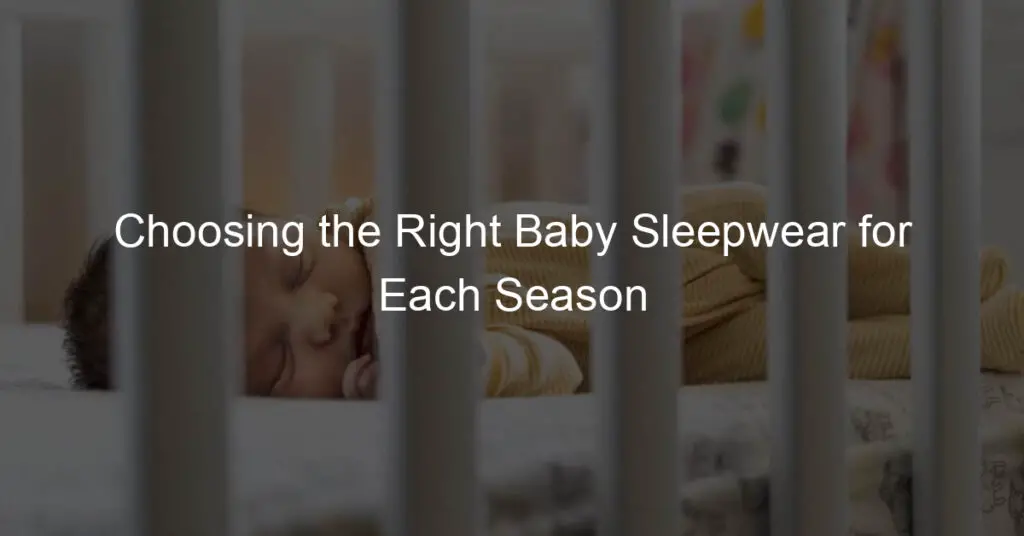Introduction: Baby Sleep in Bouncer Safety
As parents, we all want the best for our little ones. One of the most important aspects of their early life is ensuring they get a good night’s sleep. However, the safety of your baby while they sleep is paramount. This is where baby bouncers come into play. While they are a common tool used by many parents to help their babies sleep, it’s crucial to understand the safety implications of using a bouncer for your baby’s sleep.
-
- Importance of Safe Baby Sleep
Sleep is vital for your baby’s growth and development. It’s during sleep that your baby’s brain and physical body grow and develop. However, safe sleep is just as important. According to the American Academy of Pediatrics, unsafe sleep environments can lead to risks such as Sudden Infant Death Syndrome (SIDS). Therefore, ensuring your baby sleeps in a safe environment is crucial.
-
- Common Methods for Baby Sleep
There are several methods parents use to help their babies sleep. These include rocking, swaddling, using a pacifier, and using sleep aids like baby bouncers. While these methods can be effective, it’s important to understand how to use them safely. For instance, while baby bouncers can help soothe your baby to sleep, they should not be used for prolonged sleep or unsupervised sleep due to the risk of SIDS.
In the following sections, we will delve deeper into the use of baby bouncers for sleep, their pros and cons, safety tips, and alternatives. We will also share some real experiences from parents who have used baby bouncers for their little ones’ sleep.
Understanding Bouncers: Bouncer for Baby Sleep

When it comes to baby sleep, bouncers can be a helpful tool. But what exactly is a baby bouncer, and how can it be used to help your baby sleep? Let’s delve into these questions.
-
- What is a baby bouncer?
A baby bouncer, also known as a baby rocker, is a versatile piece of baby equipment that provides a safe and comfortable place for your baby to sit or lie down. The bouncer is designed to mimic the rocking and bouncing motions that babies find soothing. It’s typically lightweight and portable, making it easy to move around the house. Some bouncers come with additional features like music, vibrations, and toys to keep your baby entertained. Learn more about baby bouncers here.
-
- How is a bouncer used for baby sleep?
Many parents find that a bouncer can be an effective tool for helping their baby fall asleep. The gentle bouncing or rocking motion can soothe a fussy baby and lull them to sleep. To use a bouncer for baby sleep, simply place your baby in the bouncer, secure them with the safety harness, and gently bounce or rock the bouncer. Some bouncers even come with a built-in sleep mode that provides a continuous, gentle rocking motion. However, it’s important to note that while a bouncer can be a useful tool for helping your baby fall asleep, it should not be used as a substitute for a crib or bassinet. Babies should always be moved to a safe sleeping surface once they fall asleep. Learn more about safe baby sleep practices here.
In the next section, we will discuss the pros and cons of using a bouncer for baby sleep overnight. Stay tuned!

Pros and Cons: Baby Sleep in Bouncer Overnight
When it comes to the question of letting your baby sleep in a bouncer overnight, there are several pros and cons to consider. Let’s first look at the potential benefits:
Pros
-
- Convenience for parents
One of the most significant advantages of using a bouncer for overnight sleep is convenience. Bouncers are portable, allowing parents to move them around the house easily. This means you can keep your baby close to you, even when you’re busy with other tasks. Plus, the gentle rocking motion can help soothe your baby to sleep, reducing the time you need to spend rocking or comforting them.
-
- Potential for longer sleep periods
Some parents find that their babies sleep longer when in a bouncer. The snug fit and gentle rocking motion can mimic the feeling of being in the womb, which can be comforting for newborns. This can potentially lead to longer, more restful sleep periods. However, it’s important to note that every baby is different, and what works for one may not work for another.
While these benefits can make a bouncer seem like an attractive option for overnight sleep, it’s crucial to also consider the potential downsides. In the next section, we’ll explore some of the possible risks and drawbacks.
Cons
-
- Potential Safety Risks
While baby bouncers can provide a convenient solution for busy parents, they also come with potential safety risks. According to a report from the Consumer Product Safety Commission, there have been instances of babies falling from bouncers or the bouncer tipping over, leading to injuries. It’s crucial to always supervise your baby while they’re in the bouncer and ensure the bouncer is used on a flat, stable surface.
-
- Possible Impact on Sleep Quality
Another potential downside of using a baby bouncer for overnight sleep is the possible impact on sleep quality. Some experts believe that the motion of the bouncer can interfere with the baby’s sleep cycle, leading to fragmented and less restful sleep. A study published in the Journal of Pediatrics found that babies who slept in a stationary crib had longer, more restful sleep periods than those who slept in a moving bouncer. Therefore, while a bouncer may help your baby fall asleep, it might not provide the best quality of sleep.
Expert Opinions: Safe Baby Sleep Methods
When it comes to your baby’s sleep, it’s essential to follow the advice of experts to ensure safety and comfort. Let’s explore some of the top recommendations from pediatricians and case studies on baby sleep methods.
-
Recommendations from Pediatricians
Pediatricians are a reliable source of information when it comes to your baby’s sleep. Here are some of their key recommendations:
- Back to Sleep: The American Academy of Pediatrics (AAP) recommends that healthy infants be placed on their backs for sleep, as this can help reduce the risk of sudden infant death syndrome (SIDS). [source]
- Use a Firm Sleep Surface: A firm mattress covered with a tight-fitting sheet is recommended for infants to prevent suffocation and entrapment. [source]
- Avoid Soft Objects and Loose Bedding: Items such as pillows, quilts, comforters, and soft toys can pose suffocation hazards and should be kept out of the baby’s sleep area. [source]
-
Case Studies on Baby Sleep Methods
Case studies provide valuable insights into effective baby sleep methods. Here are a few notable ones:
- The Ferber Method: A study published in the journal Sleep found that the Ferber method, which involves gradually letting your baby self-soothe and fall asleep on their own, can be effective in improving infant sleep patterns. [source]
- The ‘No Tears’ Method: A case study published in the Journal of Child and Family Studies found that the ‘no tears’ method, which involves comforting your baby whenever they cry, can also be effective in promoting healthy sleep habits. [source]
Remember, every baby is unique, and what works for one might not work for another. It’s important to find a sleep method that suits your baby’s needs and your family’s lifestyle. Always consult with a healthcare professional if you have any concerns about your baby’s sleep.
Bouncer Safety: Baby Bouncer Safety Tips
Ensuring the safety of your baby while using a bouncer is paramount. Here, we will discuss some essential tips to keep your baby safe in a bouncer.
-
- Proper usage of baby bouncers
It’s crucial to use baby bouncers correctly to ensure your baby’s safety. Here are some tips:
-
-
- Always place the bouncer on a flat surface to prevent it from tipping over.
- Never place the bouncer on a high surface like a table or counter.
- Ensure the baby is securely fastened in the bouncer’s harness.
- Never leave your baby unattended in the bouncer.
- Follow the manufacturer’s weight and age guidelines for the bouncer.
- Precautions to take when using a bouncer for sleep
-
While bouncers can be a handy tool to help soothe a fussy baby to sleep, they should not be used for prolonged sleep periods. Here’s why:
-
- Bouncers are not designed for safe sleep. They can cause the baby’s head to fall forward, which can lead to difficulty breathing.
- Always move your baby to a safe sleep surface, like a crib or bassinet, once they fall asleep in the bouncer.
- Never leave your baby sleeping in a bouncer unattended.
Remember, safety should always be your top priority when using a baby bouncer. Always follow these tips and the manufacturer’s instructions to ensure your baby’s safety.
Alternatives to Bouncers: Newborn Sleep in Other Devices
While bouncers can be a convenient tool for parents, they may not always be the safest option for newborn sleep. There are several alternatives to bouncers that can provide a safe and comfortable sleep environment for your baby.
-
- Safe alternatives to bouncers
There are several safe alternatives to bouncers that parents can consider. These include:
-
-
- Baby cribs: A crib is a safe and sturdy option for newborn sleep. It provides a flat and firm surface which is recommended by the American Academy of Pediatrics for safe sleep.
- Bassinet: Bassinets are smaller than cribs and are designed specifically for newborns. They are portable and can be placed next to the parent’s bed for easy access during the night.
- Playards: Also known as playpens, these are versatile devices that can be used for sleep as well as play. They are typically larger than bassinets but smaller than cribs.
- Comparisons between bouncers and other devices
-
When comparing bouncers with other devices, there are several factors to consider:
-
- Safety: Bouncers are not designed for prolonged sleep. They can pose a risk of SIDS (Sudden Infant Death Syndrome) due to the inclined position that can cause the baby’s head to fall forward, blocking their airway. On the other hand, cribs, bassinets, and playards provide a flat and firm surface for safe sleep.
- Convenience: Bouncers are lightweight and portable, making them convenient for use around the house. However, they are not suitable for overnight sleep. Cribs, bassinets, and playards, while less portable, provide a more stable and secure sleep environment.
- Longevity: Bouncers can only be used until the baby can sit up unassisted, usually around 6 months of age. Cribs, bassinets, and playards can be used for a longer period, with cribs being usable until the child is ready for a toddler bed.
In conclusion, while bouncers can be useful for short periods of supervised awake time, they are not the safest or most suitable option for newborn sleep. Parents should consider alternatives such as cribs, bassinets, or playards for their baby’s sleep needs.
Real Experiences: Baby Bouncer Usage Stories
Every parent’s journey is unique, and the methods they choose to soothe and put their babies to sleep vary. Here, we share some real-life experiences from parents who have used baby bouncers and those who have chosen other methods.
-
Stories from Parents Who Use Bouncers for Sleep
Many parents have found baby bouncers to be a lifesaver. For instance, Sarah, a mother of two, shares, “My baby bouncer was a game-changer. It was the only thing that could get my little one to sleep during those early months. The gentle bouncing motion was soothing and helped him fall asleep quickly.”
Another parent, John, found that the bouncer was particularly useful during the day. He says, “The bouncer was great for daytime naps. It kept my daughter secure and comfortable, and I could easily move it around the house so she could always be near me.”
-
Insights from Parents Who Choose Other Methods
Not all parents find bouncers to be the best solution. Some prefer other methods for getting their babies to sleep. For example, Emily, a mother of a six-month-old, says, “I tried a bouncer, but my son didn’t seem to like it. Instead, I found that swaddling and rocking him in my arms worked best.”
Another parent, Michael, found success with a different approach. He shares, “We used a combination of white noise and a pacifier. The bouncer didn’t work for us, but every baby is different. It’s all about finding what works best for your child.”
These stories highlight the fact that what works for one baby may not work for another. It’s important to try different methods and find what suits your baby best. Whether you choose a bouncer or another method, the most important thing is that your baby is safe, comfortable, and able to get the sleep they need.
Conclusion: Infant Sleep in Bouncer – Is It Safe?
As we reach the end of our comprehensive exploration of infant sleep in bouncers, it’s time to draw some conclusions. We’ve delved into the nature of bouncers, their pros and cons, expert opinions, safety tips, alternatives, and real-life experiences. Now, let’s recap the key points and share some final thoughts on the safety of babies sleeping in bouncers.
-
- Recap of key points
Firstly, we learned that bouncers can be a useful tool for parents, providing a safe and comfortable space for babies to rest and play. However, they are not designed for prolonged or overnight sleep. The inclined position can potentially lead to positional asphyxia, a serious condition that can restrict a baby’s breathing.
Secondly, we discovered that while some parents have had positive experiences with bouncers, experts generally advise against using them for sleep. Instead, they recommend flat and firm sleep surfaces as the safest option for infants.
Lastly, we explored alternatives to bouncers, such as cribs, bassinets, and play yards. These options are generally considered safer for sleep, as they provide a flat and firm surface that reduces the risk of SIDS (Sudden Infant Death Syndrome).
-
- Final thoughts on the safety of babies sleeping in bouncers
After considering all the information, it’s clear that while bouncers can be a helpful tool for parents, they should not be used for regular or overnight sleep. The risks associated with their use for sleep, particularly positional asphyxia and SIDS, are too great to ignore.
As parents, the safety of our children is paramount. It’s essential to follow expert advice and use products as they are intended to be used. In the case of bouncers, this means using them for awake time only and always under supervision.
Remember, every baby is unique, and what works for one may not work for another. Always consult with a healthcare professional if you have any concerns about your baby’s sleep habits or safety.
For more information on safe sleep practices for infants, visit the Sudden Infant Death Syndrome (SIDS) and Other Sleep-Related Causes of Infant Death page on Wikipedia.














